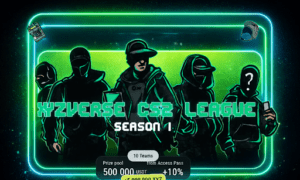UI design matters to keep up with competition because it is the first thing that users see and interact with. A well-designed UI can make a website or app more user-friendly and enjoyable to use, which can lead to increased engagement and conversions. Additionally, a good UI can help to create a positive brand image and make a company stand out from the competition.
Here are some of the benefits of good UI design:
- Increased user engagement: A well-designed UI can make it easier for users to find what they are looking for and complete tasks, which can lead to increased engagement.
- Improved conversion rates: A good UI can also help to increase conversion rates by making it easier for users to take the desired action, such as making a purchase or signing up for a newsletter.
- Enhanced brand image: A positive user experience can help to create a positive brand image and make a company stand out from the competition.
- Reduced costs: A well-designed UI can also help to reduce costs by making it easier for users to find information and complete tasks, which can lead to reduced customer support costs.
Overall, UI design is an important part of any website or app. By investing in good UI design, companies can create a positive user experience that can lead to increased engagement, conversions, and brand awareness.
In 2023, UI design is expected to continue to evolve, with a focus on personalization, accessibility, and sustainability. Personalization will be key to providing users with a tailored experience that meets their individual needs.
Top trends of Website UI design in 2023
Website UI design is evolving rapidly, driven by advancements in technology and changing user preferences. In 2023, designers are embracing innovative concepts to create visually stunning and user-centric interfaces.
1. Dark Mode Dominance
Dark mode continues to gain popularity due to its aesthetic appeal and reduced strain on users’ eyes. Websites are implementing dark color schemes that not only look elegant but also conserve device battery life.
2. Microinteractions for Engagement
Microinteractions are subtle animations that respond to user actions, providing real-time feedback and enhancing engagement. From button animations to interactive scrolling effects, micro-interactions create a dynamic and enjoyable browsing experience.
3. Immersive 3D Elements
Advancements in web technologies have enabled the seamless integration of 3D elements into websites. This trend adds depth and realism, allowing users to interact with products and content in a more immersive manner.
4. Artificial Intelligence Integration
AI is revolutionizing website UI design by offering personalized experiences. Chatbots, predictive search, and content recommendations based on user behavior enhance user satisfaction and drive conversions.
5. Minimalistic Approach
Simplicity is key. Designers are opting for minimalistic layouts with ample white space, clear typography, and focused content. This approach ensures easy navigation and emphasizes the most important elements.
Arsh Sanwarwala, CEO & founder of ThrillX says, “It’s best to keep it simple and minimalistic in terms of content density. I’d rather use the negative space to drive focus to my CTA’s “
6. Voice User Interface (VUI) Integration
The rise of voice assistants has led to the integration of VUI in websites. Users can navigate, search, and interact with websites using voice commands, making the experience more convenient and hands-free.
7. Scrolling Transformations
Scrolling is no longer limited to up and down movements. Websites are incorporating horizontal scrolling and parallax effects to add visual interest and creativity to their designs.
8. Augmented Reality (AR) Enhancements
AR is bridging the gap between the virtual and physical worlds. Websites are utilizing AR to let users visualize products in real-world settings before making a purchase, enhancing the decision-making process.
9. Abstract and Dreamy Illustrations
Artistic and dreamy illustrations are replacing traditional images. These unique visuals not only captivate users but also convey emotions and stories that resonate with the brand.
10. Fluid and Organic Shapes
Geometric shapes are taking a back seat as fluid and organic shapes come to the forefront. These shapes add a sense of playfulness and creativity to the design, breaking away from traditional grids.
You might also like: Essential Web Design Tools: A Comprehensive Guide to Enhancing Your Design Workflow
Conclusion
As we delve into the world of website UI design in 2023, it’s evident that creativity and innovation are driving the industry forward. These trends are transforming websites into captivating and interactive digital experiences, setting new standards for user engagement and satisfaction.
FAQs
Q1: Why is dark mode so popular in UI design?
Dark mode is popular due to its visually appealing aesthetics and reduced strain on the eyes, especially during night-time browsing.
Q2: How do microinteractions enhance user engagement?
Microinteractions provide instant feedback to user actions, making the browsing experience more interactive and satisfying.
Q3: What is the significance of AR in website design?
AR enhances user engagement by allowing them to visualize products or experiences in real-world contexts before making decisions.
Q4: How does AI integration benefit users?
AI integration offers personalized experiences, such as tailored content recommendations and efficient customer support through chatbots.
Q5: Why is inclusivity important in UI design?
Inclusivity ensures that websites are accessible to all users, including those with disabilities, promoting equal access to information and services.





























